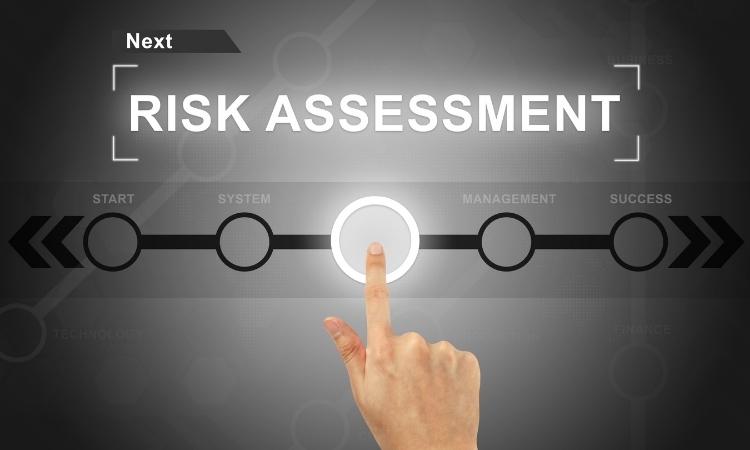It is a document that outlines how a business will continue to operate in the event of an unplanned service disruption. It's a lot more in-depth than a disaster recovery plan since it covers business processes, assets, human resources, and business partners – all tight areas that could be affected.
Plans typically include a list of supplies and equipment and data backups, and backup site locations. Contact information for emergency responders, prominent individuals, backup site suppliers, and plan administrators can also be included in plans.
Projects may consist of specific methods for maintaining business operations during short- and long-term disruptions. Some examples of disaster situations are:
- Floods, hurricanes, and tornadoes are examples of weather events.
- Accidents that occur on the premises
- Outages due to technology
- Breach of security and cybersecurity incidents
- Disruptions in the supply chain
- Any other central system, process, or operational failure halts fundamental functions and puts “business as usual” on hold.
What Is a Business Continuity Plan's Purpose?

BPC means a business continuity plan that aims to limit the damage and resume operations before any of the above scenarios becomes an existential danger to the company.
Even seemingly little incidents, such as a strong storm destroying physical building infrastructure, might have far-reaching implications in other fundamental business fields.
Consider the consequences of a tornado that ruins your only third-party warehousing service for inventory storage or a ransomware attack that holds your customers' payment and account information hostage.
1. Business Must Be Able to Withstand Adversity
That is to say, essential company functions are planned in the event of a crisis. The business continuity team conducts a risk assessment of each part to identify weaknesses and vulnerabilities and then implements countermeasures. This helps to keep risk management policies in place.
2. Stakeholders Prioritise Functions
They choose which systems should be brought online first. The earlier functions can return to a functional state after a disaster; the less likely the organisation will experience long-term damage. IT stakeholders build an actionable disaster recovery plan and set disaster recovery goals.
After mission-critical functions have been restored, team members work their way down the priority list, enlisting third-party assistance.
3. Organisations Require a Contingency Plan
It happens within established crisis scenarios, with branching paths that describe chains of command, stakeholder obligations, and any technical skills required for emergency management.
Finally, an optimised business continuity plan contains a recovery time objective (RTO) to determine how quickly business activities must be restored, as well as a business impact analysis (BIA) to measure the success of recovery efforts.
On the other hand, a disaster report demonstrates to stakeholders how the disaster recovery planning process might be improved.
Business Continuity Plan's Components
A BCP should include the following components, according to business continuity specialist Paul Kirvan:
- Essential data, including important contact information, at the start of the plan
- A change management technique that is described by a revision management process
- The objective and scope
- Policy information; how to use the program, including instructions for when the project will be implemented.
- Procedures for emergency reaction and management
- Step-by-step instructions
- Flowcharts and checklists
- A dictionary of the terminology used in the strategy and its implementation
- A timeline for assessing, testing, and revising the plan
When Should You Re-evaluate Your Business Continuity Plan?
A business continuity plan should be evaluated at least once a year, but maybe as frequently as once every quarter.
These are best-practice recommendations, not hard-and-fast rules. Only set your testing schedule after considering how frequently your company can execute table-top BCP exercises without overwhelming employees and how much your company's infrastructure or technology has changed between rounds of testing.
7 Steps For Creating a Business Continuity

Developing a sound business continuity plan requires time and money and a significant amount of time from the company's management. A business continuity plan will be robust, addressing all critical business functions and assisting the company in running its operations efficiently.
The important actions that the business continuity team must take to create an effective plan that will withstand pandemics and other emergency events are outlined below.
1. Determine the Plan's Objectives

Any agency's business continuity management frequently extends beyond the IT department. It encompasses many corporate tasks, including human resources, product development, sales and marketing, operations, public relations, etc.
Identification of the business's aims and objectives is critical since it will aid in the formulation of a business continuity strategy that will keep operations running while minimising disruption. Identifying goals will assist in analysing the risk and developing potential recovery methods.
2. Form an Emergency Response Team

It is critical to forming a team prepared to mitigate risks in an emergency. The development of an emergency preparation team is essential since the success of the business continuity plan relies heavily on the team members' abilities and competence.
Choose leaders, cross-functional managers, or anybody else you think will be helpful during the process. Ascertain that multiple leaders will lead in designing the plan and carrying it out as needed. The team is in charge of keeping things moving forward while making important decisions.
3. Risk Assessment and Business Impact Analysis are Two Tools That Can Assess Risk

Risk assessment is an essential aspect of the business continuity plan since it includes all potential risks that the company may encounter during an emergency. BCP planning will be undertaken to generate an actual impact on conducting business activities smoothly after a crisis, depending on the type and nature of the risks.
Identifying and analysing potential risks and hazards to your firm will help you adjust, remove, or add critical business services to your plan. Everything should be appropriately documented to conduct a thorough business effect analysis.
4. Identify The Most Critical Business Functions

When developing a business continuity strategy, it is critical to identify the primary business services. The department that will help your firm run efficiently during a pandemic or emergency scenario will be included in the plan's core business services.
As a result, depending on the sort of firm and its size, selecting departments such as human resources, business development, sales, marketing, and so on is critical. Order fulfilment, delivery deadlines, inventory management, supply chain management, e-commerce platform functionality, customer support, and other business tasks can all be incorporated into planning.
5. Must Address Every Business Function

When designing a business continuity plan, including the necessary departments becomes essential. Every fundamental business function should be planned so that it can work properly. The strategy must cover how you will take orders and fulfil deliveries to clients while maintaining inventories and the supply chain.
If a single plan isn't working effectively, backup procedures should be in place for all departments. As a result, identifying risks and their commercial implications is critical to effectively preparing a business continuity strategy.
6. Examine the Plan in Detail

It won't be comprehensive if you don't examine your business continuity plan thoroughly and make the necessary modifications. The program should be flexible enough to allow you to add or eliminate items at the last minute.
You must guarantee that the formulation of an emergency policy, the amount of company risk, and financial resources that can be tapped during a crisis have all been recorded, employee communication during a disaster, and external community partners that can assist you in a critical scenario. The firm will be able to run error-free during the disruption if the strategy is created in this manner.
7. Testing, Staff Training, and Improvements

Following creating a business continuity plan, it is critical to demonstrate the strategy to stakeholders, who will recommend the necessary actions through trial runs. It will reassure you that the project will work in practice during the outage.
Multiple tests should be undertaken to measure the efficacy of the business continuity strategy. Train the team so that they can perform their essential jobs. Regular updates and modifications should ensure that the system operates in real-life situations.
In Conclusion
Nothing can ever be guaranteed. Perhaps you'll never have to deal with a severe business interruption. However, there's a decent likelihood that you'll face some difficulties, if not a better probability.
It would help if you began by adequately understanding your level of risk and what has to be done to keep the firm running. That alone will provide you with a competitive advantage while reducing any financial risk.
Then, by planning your entire plan, you will be able to sleep better at night. After everyone in your firm is comfortable with and trained on implementing this plan, you'll have a piece of mind knowing that if a disaster strikes, not everything will be lost.








